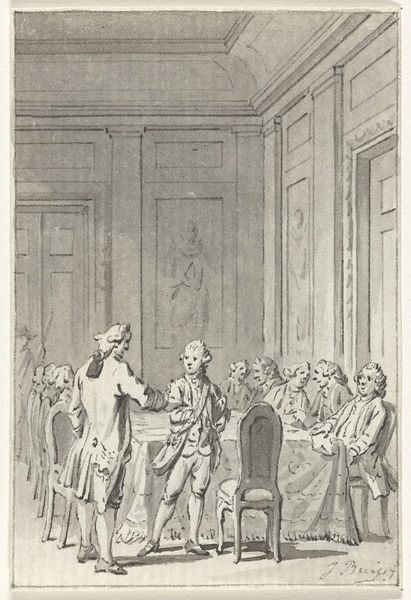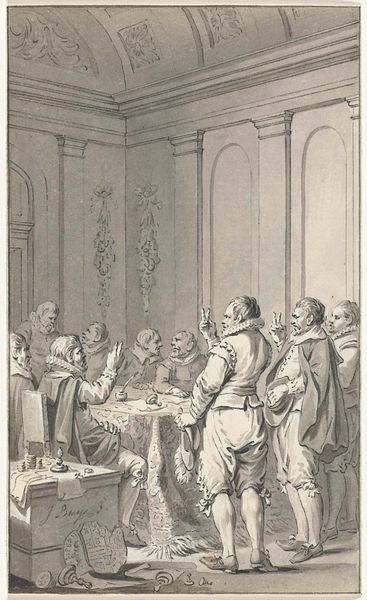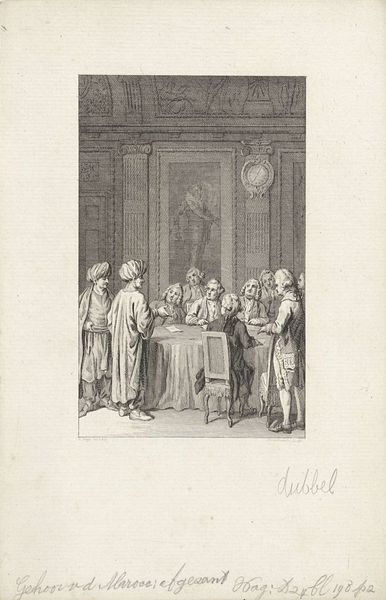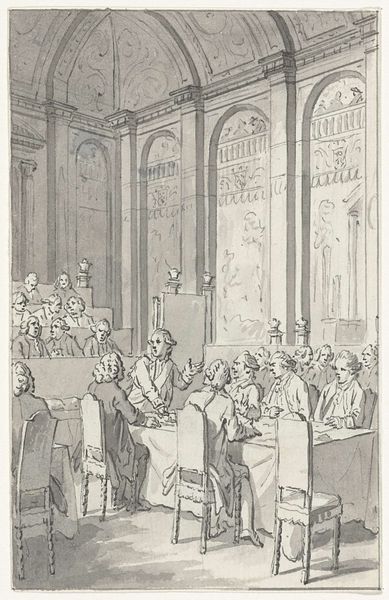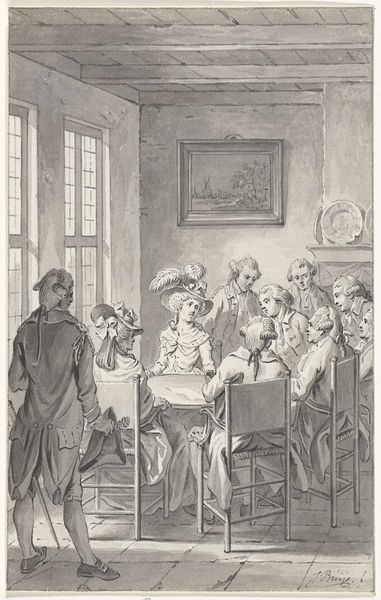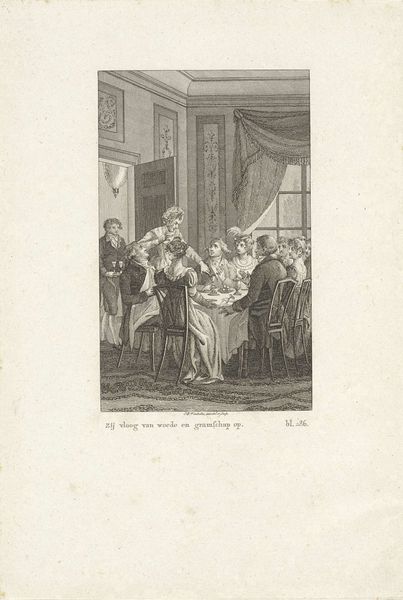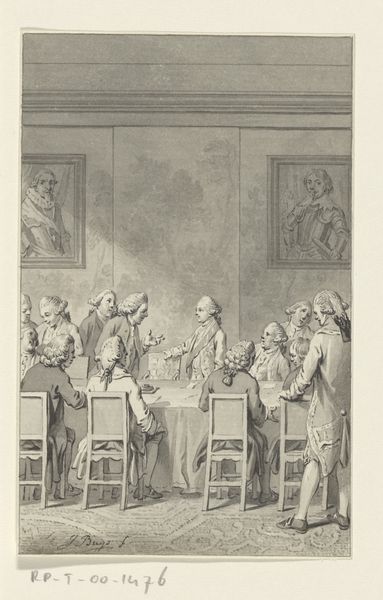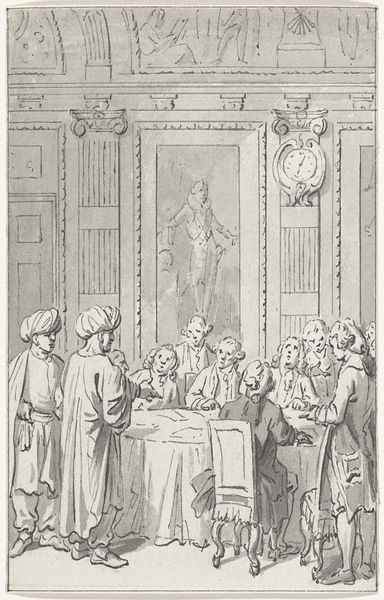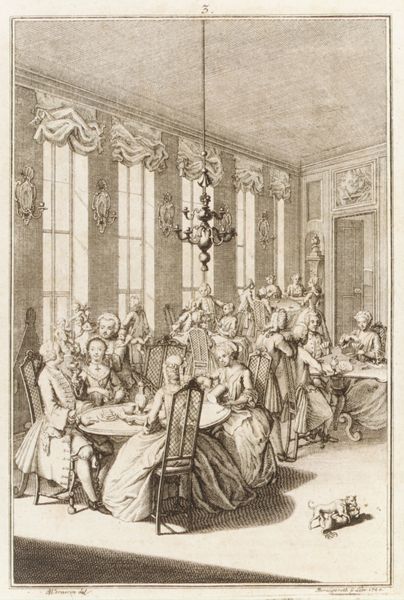
Ontvangst van de Marokkaanse ambassadeur in de Staten Generaal, 26 september 1759 Possibly 1759 - 1801
0:00
0:00
jacobusbuys
Rijksmuseum
drawing, ink, pencil
#
portrait
#
drawing
#
neoclacissism
#
ink
#
group-portraits
#
pencil
#
history-painting
Dimensions: height 82 mm, width 56 mm
Copyright: Rijks Museum: Open Domain
Curator: Look at the scene captured here! This drawing, dating perhaps from 1759 to 1801, depicts the "Reception of the Moroccan Ambassador in the States General, 26 September 1759." It's attributed to Jacobus Buys and now resides in the Rijksmuseum collection. Editor: My initial impression is one of formality and almost staged interaction. The grayscale rendering lends an antique feel. It evokes a sense of careful, considered deliberation, but somewhat devoid of emotion. What materials did Buys use? Curator: He employed pencil and ink, masterfully using delicate lines to define the setting. Notice how the composition highlights the symbols of power and diplomacy—the ambassador in distinct dress, the formal setting of the States General. Editor: Yes, but those distinctions strike me as more central to the message. The clothes themselves, made of fabric carefully chosen, cut, sewn and even cleaned all give insight into this meeting of power, status and the economics and materiality inherent within. It appears he sought to depict a very precise moment. Curator: Precisely. And I would argue that precise moment speaks to an intersection of cultures, and perhaps, tensions between them, coded in clothing, setting and social customs. Notice the serene facial expressions and deliberate, gentle brushstrokes. This gives the group portrait a sense of detached observation. Editor: I think the very means of its creation impact that too, it's an interesting commentary if the finished piece wasn't printed using something industrial. What was the reception like at the time? Curator: We see the echoes of Neoclassicism, of order and clarity as aspirations. This drawing speaks to an Enlightenment ideal of reasoned engagement with the world and other cultures. The historical weight it carries allows us to project the cultural memory into it. Editor: Well, that’s quite fascinating, when you factor in trade and economic relations from a materialist point of view. These aren't simply passive illustrations, but artifacts of cultural exchange through crafted object production. Curator: Indeed. The layers of meaning embedded in the drawing only deepen upon further consideration. Thank you. Editor: Likewise, seeing how this painstaking representation translates global economics offers so many routes to interpret culture.
Comments
No comments
Be the first to comment and join the conversation on the ultimate creative platform.



